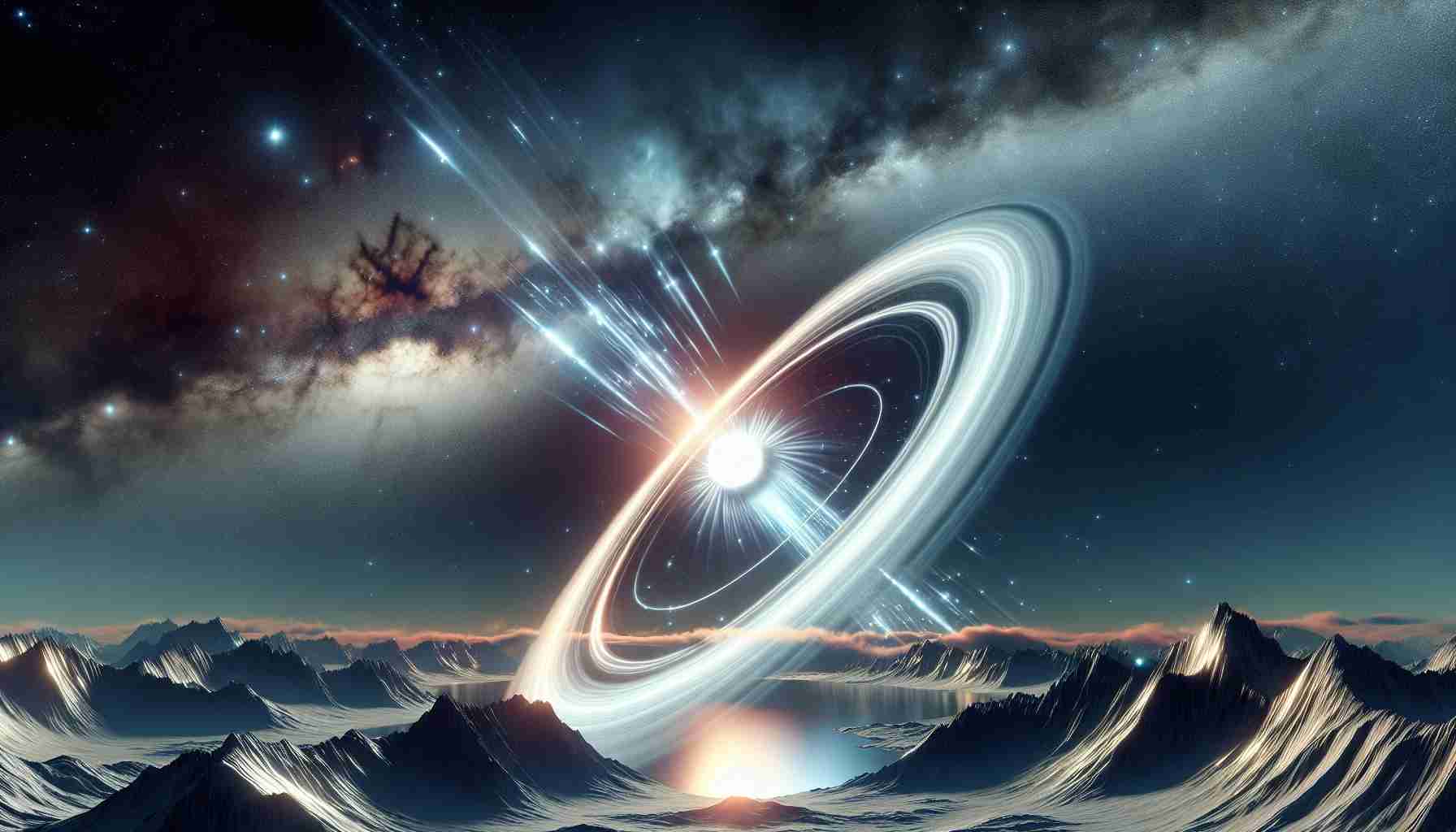- The Bullseye galaxy, or LEDA 1313424, showcases an unprecedented nine-ring formation resulting from a galactic collision.
- This discovery, observed from NASA’s Hubble Space Telescope and Keck Observatory, highlights how such events can trigger waves of star formation.
- The collision occurred approximately 50 million years ago, with a gas trail still linking the two galaxies, emphasizing their violent interaction.
- Finding nine rings surpasses the typical two or three previously noted in similar galactic merges, offering new insights into cosmic behaviors.
- Future research, powered by upcoming telescopes like NASA’s Nancy Grace Roman Space Telescope, promises to uncover more about these dramatic cosmic events.
What happens when a galaxy is struck by another galactic body? Like a stone creating ripples in a pond, the Bullseye galaxy has become the epicenter of an extraordinary cosmic event. Thanks to the keen observations from NASA’s Hubble Space Telescope and Hawaii’s Keck Observatory, researchers have uncovered a breathtaking nine-ring formation within this galaxy, formally known as LEDA 1313424, located a staggering 567 million light-years away in the constellation Pisces.
Traditionally, galactic collisions produced only two or three observable rings, but the Bullseye shattered records, unveiling a spectacular nine. This serendipitous discovery emerged when scientists noticed a striking structure during their galaxy study, compelling them to dive deeper into its mysteries. Each ring represents a wave of star formation triggered by the mid-sized blue dwarf galaxy that plowed through its core, sparking stellar creation across vast distances.
This cosmic drama unfolded approximately 50 million years ago, shortly after the collision, and surprisingly, a gas trail still connects the two galaxies, underscoring their violent interaction. As researchers digest these new findings, they align closely with long-held models predicting such galactic behaviors during head-on collisions.
The Bullseye galaxy is not just an astronomical wonder; it serves as a reminder of the dramatic and chaotic nature of the universe. As we ponder the eventual collision between our Milky Way and the Andromeda galaxy, we realize there’s so much to learn about these spectacular events in our cosmic neighborhood. The future looks bright for galactic discoveries, especially with NASA’s upcoming Nancy Grace Roman Space Telescope set to reveal even more celestial treasures.
Unveiling Cosmic Chaos: The Bullseye Galaxy’s Nine-Ring Mystery
What happens when a galaxy is struck by another galactic body?
When one galaxy collides with another, the consequences can be astonishing, leading to new star formation, the disruption of existing stars, and the creation of unique structures like rings. The recent discovery concerning the Bullseye galaxy (LEDA 1313424), located 567 million light-years away, illustrates this process in a spectacular way. Unlike traditional galactic collisions that result in two or three observable rings, the Bullseye galaxy showcases a remarkable nine-ring formation, shedding light on the intricacies of galactic interactions.
New Insights into Galactic Collisions
1. Wave of Star Formation: Each ring around the Bullseye galaxy represents waves of new star formation. The collision with a mid-sized blue dwarf galaxy triggered stellar creation, demonstrating how such events can lead to vibrant bursts of activity in otherwise stable galaxies.
2. Ongoing Interaction: The continued presence of a gas trail linking the Bullseye galaxy to the dwarf galaxy signifies their ongoing interaction, hinting at the dynamic nature of these celestial bodies long after the initial collision.
3. Predictions and Models: The findings corroborate long-established astrophysical models that predict the outcomes of head-on galactic collisions, solidifying our understanding of galactic evolution.
Key Questions
1. What are the long-term effects of galactic collisions?
– Over billions of years, galactic collisions can lead to the merging of galaxies, changes in star orbits, and the formation of new structures like elliptical galaxies. The newly formed stars might even influence neighboring galaxies, leading to a cascade of collisions in the cluster.
2. How do galaxy collisions affect the formation of dark matter structures?
– When galaxies collide, their gravitational interactions can lead to the movement and redistribution of dark matter, which plays a crucial role in galaxy formation. Understanding these effects can provide insight into the large-scale structure of the universe.
3. What future research is planned to study galactic collisions?
– The upcoming Nancy Grace Roman Space Telescope will significantly expand our observational capabilities, focusing on the formation and interactions of galaxies. Researchers expect to uncover more about the star formation processes and dark matter during such cosmic events.
Related Links
For more details on cosmic phenomena and research:
– Nasa Official Website
– Hubble Space Telescope
The Bullseye galaxy’s nine-ring formation not only captivates our imagination but also stands as a testament to the chaotic and awe-inspiring workings of the universe. With ongoing advancements in astronomical research, we are on the cusp of uncovering even more secrets that lie within galactic collisions.













